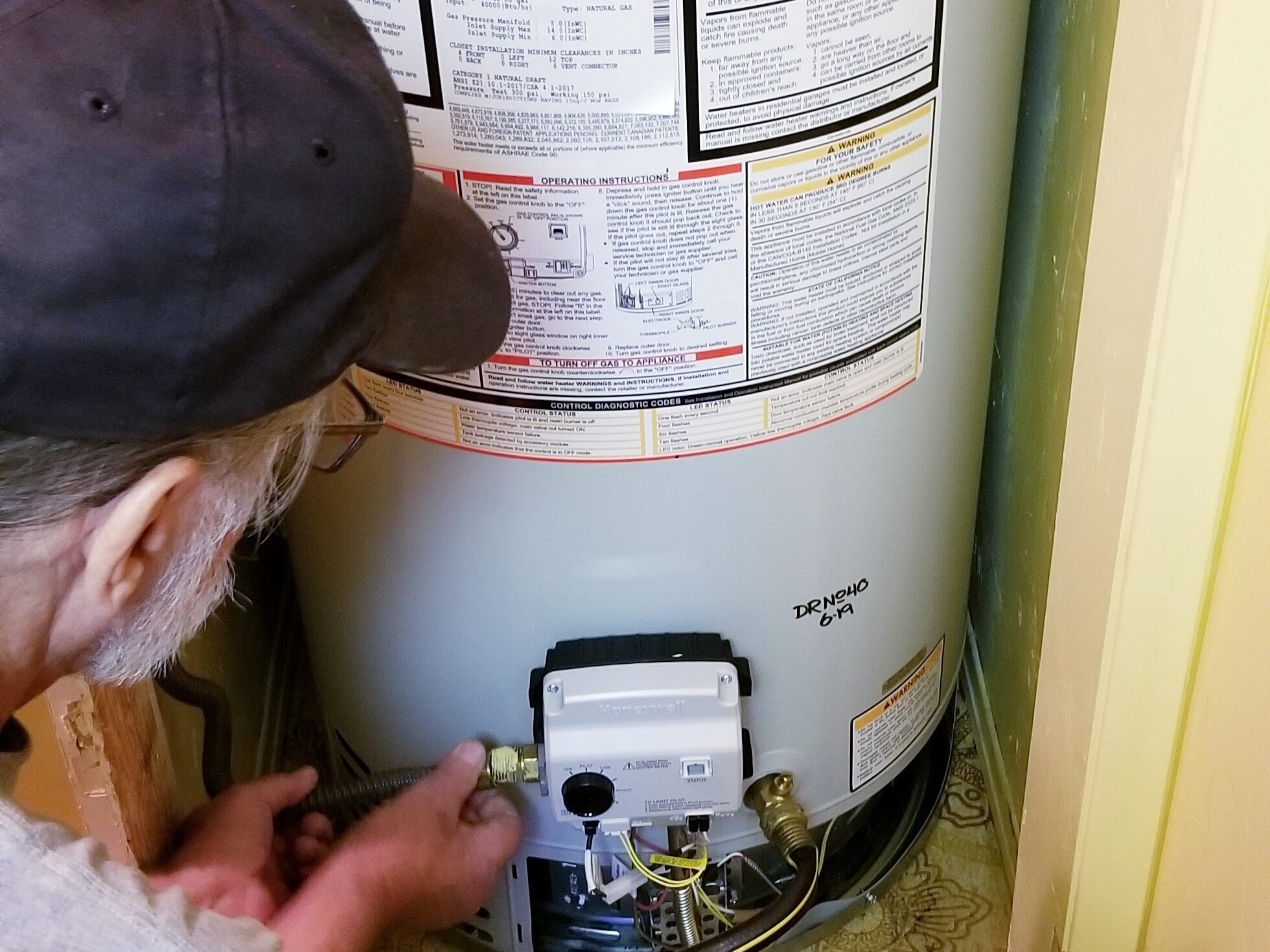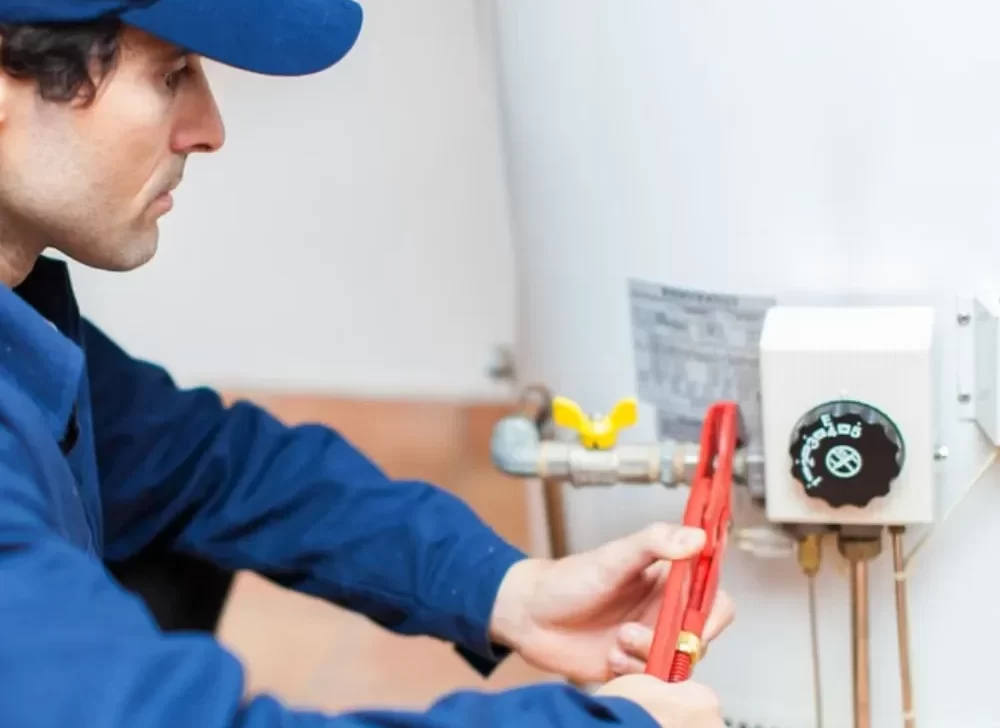Understanding Water Heater Thermostats: How to Adjust for Optimal Performance
- Home
- Understanding Water Heater Thermostats: How to Adjust for Optimal Performance
Recent Posts
- Main Water Line Leak: Symptoms, Detection & Repair Guide
- Repairs for Water Leaks With Pressure: 6 Fast & Reliable Fixes
- How to Fix a Loose Faucet Handle in 3 Easy Steps (DIY Guide)
- Kitchen Sink Leaking Underneath? Here’s How to Fix It Fast
- Understanding Texas Water Quality and Hardness Levels By Cities and Zip Code
Dinomite Services

Nobody likes stepping into a shower expecting warmth and getting an icy surprise. If your water temperature isn’t quite right, knowing how to adjust your water heater thermostat can give you one of the best shower experiences ever!
Sometimes, seasonal changes call for an adjustment to its setting. Maybe bumping up the heat in winter or lowering it in summer to save on costs. Water heater performance impacts not just comfort but your energy bills too!
There’s more to it than just turning a dial sideways. Adjusting a water heater’s thermostat needs a clear understanding of how to do it safely and effectively. Ready to learn how? Follow this guide from the experts at Dinomite Plumbing, and discover how a few simple steps can make your life easier.
The Need for a Water Heater Thermostat Adjustment
The Importance of Optimal Water Temperature
Getting the right temperature on your water heater can feel like finding the sweet spot between scalding hot and barely warm.
The ideal range? Between 120°F and 140°F.
Adjusting water heater temperature to this range keeps everyone safe while still providing that cozy warmth you expect. Setting your temperature too low can lead to bacteria growth, while anything too high risks burns.
Balancing Comfort and Energy Efficiency
Adjusting the thermostat isn’t just about finding the perfect shower temperature. It’s beneficial to your wallet too!
Setting your water heater to a reasonable level helps maintain optimal water heater performance without overworking it. This balance can cut down on energy costs and even extend the life of your water heater. If issues arise, consider water heater replacement to ensure your system operates effectively. These small adjustments can make a big difference in keeping your water heater efficient and your bills manageable.
How to Safely Adjust Your Water Heater Thermostat
Step-by-Step Guide for Electric Water Heaters
Find the Thermostat Panel
First things first—find the thermostat panel on your electric water heater. It’s usually tucked behind a small, removable cover on the side of the tank. Use a screwdriver to open it up.
Turn Off the Power
Head to your circuit breaker and switch off the power to your water heater. This step is non-negotiable! Working on an active water heater is dangerous and just not worth the risk.
Adjust the Temperature Setting
With the power off and the panel open, you’ll see the thermostat dial. Use a flathead screwdriver to adjust the water heater thermostat to the temperature you want. Maintaining a range of 120°F to 140°F hits the sweet spot for both safety and comfort.
Replace the Panel and Restore Power
Secure the panel back in place and double-check that it’s tight. Now, switch the breaker back ON. Give the heater some time and check that it’s warming up as expected.
Step-by-Step Guide for Gas Water Heaters
Find the Control Dial
Look for the control dial at the bottom of the tank. This dial often has labels like “Low,” “Hot,” or temperature notches.
Adjust the Dial to the Desired Temperature
Turn the dial slowly to avoid drastic changes. Smaller adjustments help maintain safe and efficient heating.
Monitor for Safety and Consistency
Keep an eye on the heater after adjustments. Listen for unusual noises or changes, and check that the water temperature feels right.
Common Mistakes to Avoid When Adjusting Your Thermostat
Turning the Temperature Too High
Setting the temperature too high can be dangerous for you and your family. Temperatures above 140°F can lead to serious burns and scalding, especially for kids and older adults. Stick to safe ranges to avoid accidents.
Ignoring Regular Maintenance
Ignored heaters often build up sediment. This can lead to higher energy bills, inconsistent water temperatures, and even costly repairs when parts wear out or fail.
Not Testing the Water Temperature Post-Adjustment
After any adjustment, a quick check with a thermometer ensures your water isn’t too hot or too cool. This step locks in the adjustment and guarantees your water stays at a cozy and safe temperature.
Tips for Maintaining Optimal Water Heater Performance
Schedule Regular Maintenance
Don’t wait until you’re surprised by icy water on a cold morning. Getting a professional to inspect your water heater annually can prevent sudden breakdowns and catch problems early.
Flush Your Water Heater Annually
Sediment buildup inside the tank can reduce efficiency and cause uneven heating. Flushing the tank once a year clears out that buildup and keeps your heater performing at its best.
Insulate Your Water Heater
Adding insulation to your water heater and pipes helps with heat retention. It’s a simple way to keep the temperature steady after you adjust your water heater thermostat and save on energy.
Keep Your Water Heater at Its Best with Expert Help from Dinomite Plumbing

Understanding how to adjust a water heater thermostat can make your home safer, more comfortable, and energy-efficient. While some thermostat adjustments can be DIY, regular check-ups and complex issues are best left to water heater technicians to ensure optimal performance and safety.
If you need expert guidance or help with water heater maintenance, reach out to Dinomite Plumbing at (682) 412-1204 or email jarnold@dinomiteservices.com. Let the experts set it perfectly!

